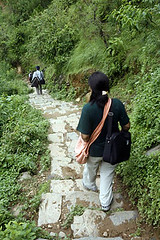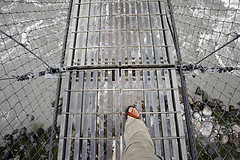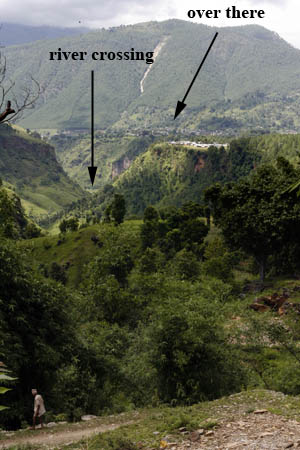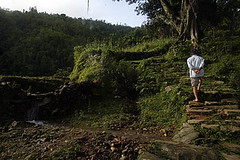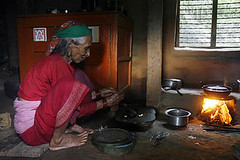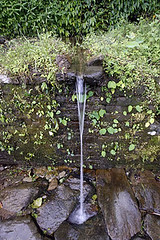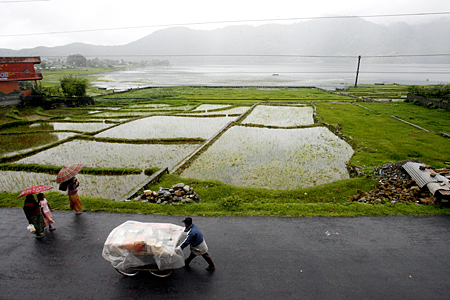While in the village of Mudikuwa with Rishikesh Tiwari, we had many discussions about the current political situation in Nepal, as well as the history of both Nepal and America. Interestingly, we came to the conclusion that he is afraid his government does not know enough about its citizens, and I worry that my government tries to know too much.
In a land sandwiched between two countries that are rapidly developing, China and India, Nepal has lagged behind economically. Rishikesh blames this on an unstable government. Too often those in power were worried about how to keep it and not concentrating on issues such as education, agricultural reform, and healthcare.
In the media as well, there are many similarities and differences. In Nepal, being a journalist is a very well respected profession that pays relatively well. And yet, depending on whom I’ve asked, every paper has been described as both a rag and a mouthpiece of the government. During the people’s movement, the
media was heavily censored,
some journalists received money to report positively on the government, and
blogging could make you known on a worldwide level.
According to a
BBC poll, in the United States, the people’s trust in the media sits at 59%, lower than the 67% level of trust in the government (One of two countries polled, along with Britain, to have government trust higher than media). Recently, the New York Times
came under fire for reporting the actions of the government. Last March
Professor Dennis Dunleavy blogged about
a May 2005 survey conducted at the University of Connecticut which showed that "only 14 percent of Americans named freedom of the press as a right in the First Amendment, while 22 percent felt that the government should be able to censor newspapers."
While the media in both countries face a somewhat skeptical public, and a government that does not always support its actions, it feels as though citizens in Nepal are optimistic that the government will finally right itself and the media will be free to report on the news. Also, everyone that I have spoken to is aware of the events going on in their country, and the history behind those events. In the United States, people are more concerned with the latest celebrity gossip than press freedom or world news. In an April talk to the Kansas Press Assn.'s 113th Annual Convention, Watergate journalist
Carl Bernstein faulted the media for being motivated by profit and catering to an "idiot culture." Due to declining readership and advertising revenue for news media outlets in the United States, the press freedom and public interest that is so sought after in Nepal feels like a distant memory quickly erased by the latest Hollywood makeup/breakup.

